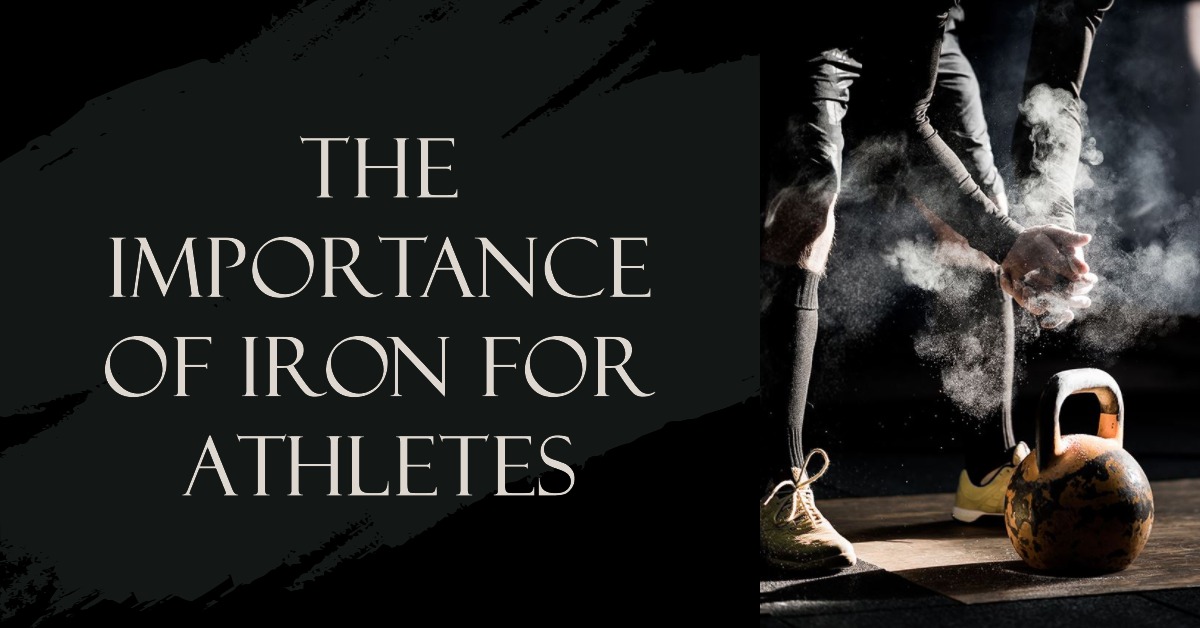Iron is a micronutrient of great importance to athletes, often overlooked and underestimated despite its key role in oxygen transport and muscle function. An anachronism of iron deficiency in athletes is anemia, characterized by tiredness, paleness and shortness of breath; these symptoms can be managed through iron infusions. This article will explore the importance of iron for athletes, the signs of iron deficiency in athletes, benefits and risks associated with iron infusions as well as how to maximize the benefits from these treatments.
What Is Iron and Why Is It Important for Athletes?
Maintaining adequate levels of iron is essential for athletes to perform at their best, and infusions can be a beneficial supplement to ensure this. Iron is a mineral found in food and the human body, and it serves several important functions in athletics. It is responsible for carrying oxygen through red blood cells to the muscles, meaning that without sufficient iron athletes may experience fatigue during physical activity. Iron also helps the body produce energy by supplying oxygen to cells, which allows muscles to work harder and longer during training and competitions. Finally, iron plays an important role in muscle recovery after periods of strenuous exercise by helping repair damaged tissue.
An athlete’s diet needs to provide enough natural sources of iron such as lean meats, eggs, dark leafy vegetables, nuts/seeds or fortified foods like cereal or grains. However, it can be difficult for athletes who are following specific diets or have gastrointestinal issues to get enough dietary iron on a regular basis. In these cases, intravenous (IV) infusions that contain high doses of iron can help replenish the athlete’s stores quickly and effectively without consuming additional calories from food sources.
Signs that an athlete may need additional iron supplementation include extreme fatigue during endurance activities despite proper hydration and nutrition habits; feelings of dizziness; difficulty breathing; cold hands and feet; paleness or sallow complexion; brittle hair/nails; increased heart rate while resting; impaired cognitive function/concentration; headaches/migraines; decreased immune system health resulting in frequent illnesses or infections. Transitional sentence: When signs of deficiency are present in athletes due to inadequate dietary intake or other conditions related to performance, IV infusions containing high doses of iron can help restore healthy levels more quickly than relying solely on dietary sources alone.
Signs of Iron Deficiency in Athletes
The effects of iron deficiency on athletes can be devastating, making it paramount for them to be aware of the signs and symptoms. The most common signs include:
- Fatigue and exhaustion, even after a good night’s rest
- Shortness of breath with minimal exertion
- Feeling lightheaded or dizzy
- Paleness in the skin, gums, and/or nail beds
Other indicators may include tingling sensations in the hands or feet, brittle nails, headaches, cravings for non-food items such as clay or dirt (known as pica), and an inability to concentrate.
Athletes who experience any of these symptoms should consult their healthcare provider to have their iron levels tested. If diagnosed with iron deficiency anemia, further testing will be recommended to determine its cause. Treatment may consist of dietary changes, supplements or medications depending on severity.
Iron is essential for proper oxygen transport throughout the body during exercise and other daily activities; therefore athletes must stay vigilant about being aware of deficiencies that could affect performance. The right combination of medical intervention and lifestyle modifications can help alleviate symptoms quickly while putting athletes back on track towards optimal health.
Benefits of Iron Infusions for Athletes
Iron infusions can be a beneficial treatment option for athletes suffering from iron deficiency, providing them with the necessary levels of oxygen to help improve performance. Iron infusions are typically administered intravenously, which allows for faster delivery and absorption of the nutrient in comparison to oral supplements. This is especially important for athletes who have an immediate need for replenishing their iron levels. Additionally, iron infusions come with fewer side effects than other forms of treatments such as oral medications because it bypasses the digestive system.
In addition to restoring depleted iron levels, iron infusions also provide additional benefits that can help athletes perform better in sports. These include improved energy production due to increased oxygenation and enhanced endurance due to increased red blood cell count. An adequate level of hemoglobin is critical for athletic performance as it helps transport oxygen through the body and delivers it directly to muscle tissue where it’s needed most during physical activity.
The effectiveness of iron infusion therapy is dependent upon finding the right balance between too little or too much iron supplementation since administering too much could result in an overload on organs such as the liver or heart. Therefore, it’s important that athletes consult with their doctor before taking any form of supplement including receiving an infusion so that they can determine if this is a safe and effective option for them based on their individual needs and health history. Moving forward, understanding the risks and side effects associated with this treatment will be essential in order to ensure its safe use by athletes who may benefit from its therapeutic effects.
Risks and Side Effects of Iron Infusions
Receiving iron infusions poses certain risks and potential side effects which must be considered when determining its suitability for athletes. As with any medical procedure, there is a risk of infection due to the introduction of foreign materials into the body. Additionally, the infusion process can cause an allergic reaction or even anaphylaxis in some people. Consequently, it is important that individuals who are considering iron infusion treatment are evaluated carefully beforehand by their doctor to ensure they do not have any allergies or other conditions that may increase their risk of complications.
In addition to the risk of infection and allergy, there are side effects associated with receiving iron infusions including headaches, dizziness, nausea, and vomiting in some cases. In rare instances, more serious complications such as heart arrhythmias or congestive heart failure can occur due to too much iron being administered at one time. To reduce these risks, healthcare professionals typically administer smaller doses over a longer period of time rather than larger doses all at once.
Given these potential risks and side effects associated with iron infusions for athletes, it is important to weigh the benefits against them before deciding whether this treatment option is appropriate. It is also beneficial to discuss safety protocols with your doctor prior to beginning any form of treatment so that you understand what steps should be taken if any adverse reactions occur during or after the infusion process. By taking these precautions, athletes can be better prepared for both potential benefits and risks associated with iron infusion therapy.
How to Maximize the Benefits of Iron Infusions
Maximizing the benefits of iron infusions requires careful consideration and adherence to safety protocols. Iron infusion can be a great way for athletes to maintain healthy levels of iron, but it is important that they not overdo it. Athletes should discuss with their healthcare provider what their ideal target level is and how often they should receive an infusion. It is also important for them to be aware of any potential risks or side effects associated with the procedure, as well as possible solutions in case of a reaction. Here are some key steps athletes can take when considering an iron infusion:
- Follow all instructions provided by your healthcare provider prior to the procedure, such as fasting before receiving the injection and avoiding certain medications or supplements that may interfere with its effectiveness.
- Be aware of any potential side effects throughout the entire process, including short-term reactions such as nausea or headaches and long-term issues such as changes in heart rate or blood pressure.
- Stay hydrated both before and after the procedure; drinking plenty of water will help flush out any excess iron in your system.
- Monitor your iron levels post-procedure to ensure they remain within a healthy range and are not too high; if so, speak with your doctor about adjusting future doses accordingly.
Iron infusions can provide many benefits to athletes who need extra energy during training sessions or competitions, but it’s essential that precautions are taken beforehand so that these benefits are maximized without any complications arising afterwards. By following these steps prior to and after an infusion, athletes can enjoy improved performance without compromising their health in the process.
Conclusion
Iron is vital for athletes to maintain their performance levels. It plays a major role in oxygen transport, muscle metabolism and energy production. Iron deficiency can have serious consequences on an athlete’s health and performance, but iron infusions can help bridge the gap. While there are risks associated with iron infusion, careful monitoring by a medical professional can minimize them. By paying attention to signs of low iron levels and taking appropriate steps, athletes can “fuel up” their bodies and reach peak performance. With the right care and nutrition, athletes can be sure that they are well-equipped for success in any endeavor.




